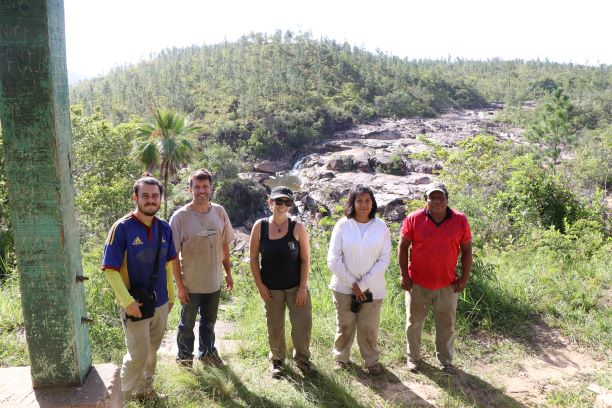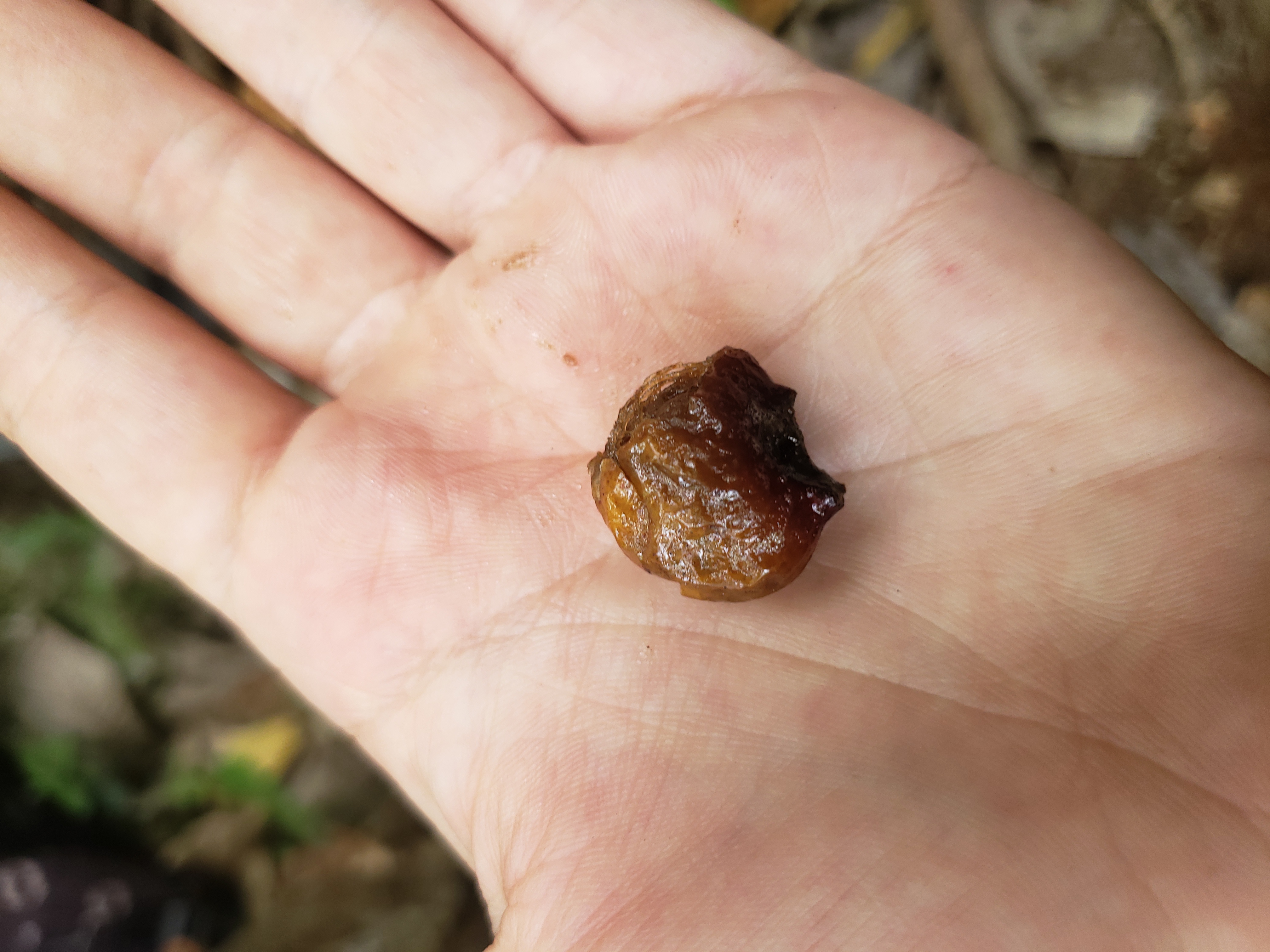 myCSUSM
myCSUSMJessica Garcia Field Blog 3, July 1, 2019
Returning home from a field experience is always so bittersweet. On one hand, I am
so excited to see my daughter; yet on the other, it is heartbreaking to leave Belize
so soon. Though this one particular experience is over, I am ready for what is yet
to come in my professional future.
As I settled into Belizean culture, it was easier to start applying my anthropological
lenses learned in my classes at CSUSM. Not only did we get to explore the Maya through
our excavations and travels to different ancient sites, we also got to get to know
the living Maya here in the present day.
 From left: Andres Berdeja, Mike Mirro, Jessica Garcia, and local Maya guide Javier
Mai
From left: Andres Berdeja, Mike Mirro, Jessica Garcia, and local Maya guide Javier
Mai
Because he has worked with biologists before, Javi gave us good advice on how to make useful and accurate field journal entries, and how to properly photograph a plant. He said to take a picture of both sides of a leaf, its stem, and the entire plant because this is the best way to identify the plant later. He said shamans and botanists identify the species of a particular plant by looking at both its leaves and stems. He told us, "When you go out to make your collection of plants, you ask the plant permission first and never take more than you need." He also advised us to pick the youngest shoots because the new growth has the most beneficial medicinal properties.
 A pod of the 'natural soap' we used to wash our hands every day before lunch in the
jungle.
A pod of the 'natural soap' we used to wash our hands every day before lunch in the
jungle.
Our last three days were spent at the Belize Archaeological Symposium. The presentations were progress reports given by every archaeologist who holds a permit for research in Belize. Being here was such an amazing experience because we got to see archaeologists from different walks of life in different stages of their careers. None of the information we learned hasn’t even been published yet, so it felt really cool and exclusive to learn about it before it gets into textbooks. Watching the different types of presentations allowed me to gain confidence in my own future in public speaking. Though I can be fearful of giving speeches, Dr. Spenard reminded us that everyone hates speaking in front of others, but the beauty is we all have information to give that others would love to have. Attending this conference was the best way to end our trip. Now that the surface has quite literally been scraped, it is time to prepare a few presentations of my own about the work we did in Belize.
Working with Dr. Spenard is such a privilege, and I would recommend it to each and every student looking to pursue archaeology. He is extremely kind, caring, and most importantly, patient. I've worked with other professors from other schools in the past, and I can say with firm confidence that this trip to Belize was by far the best I have experienced– all thanks to Dr. Spenard and the encouraging and supportive faculty of the CSUSM Anthropology Department. The professors at CSUSM have more than prepared me for this experience, and each and every one of them deserve a thank you for their knowledge that they've provided us. From the bottom of my heart, thank you all.






